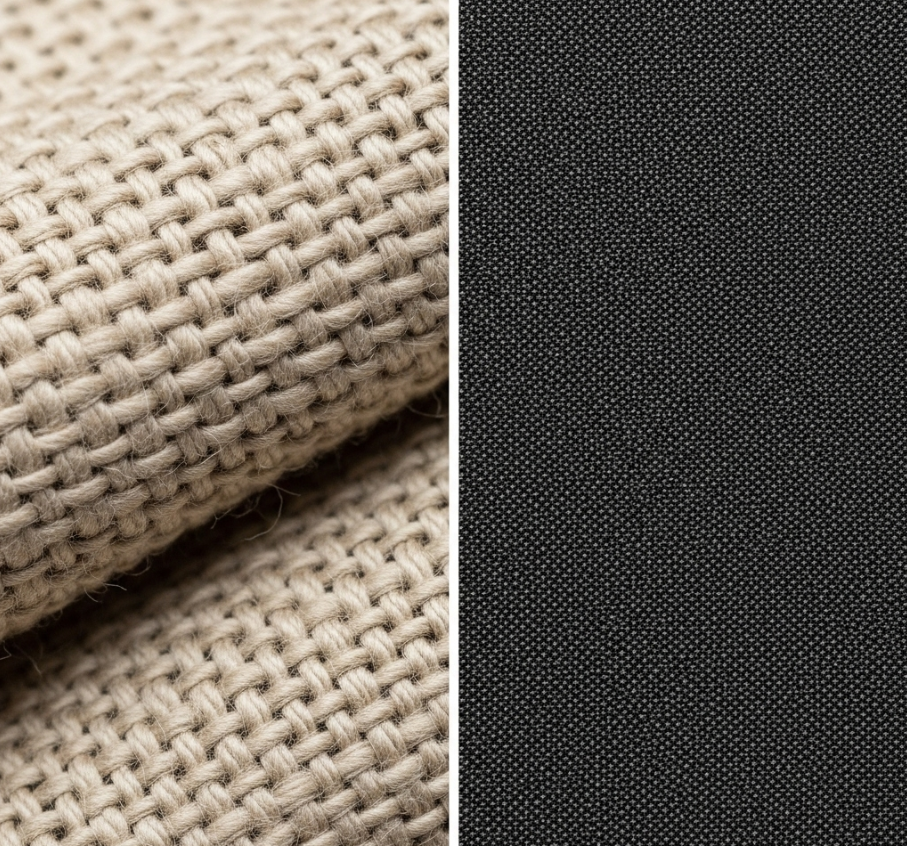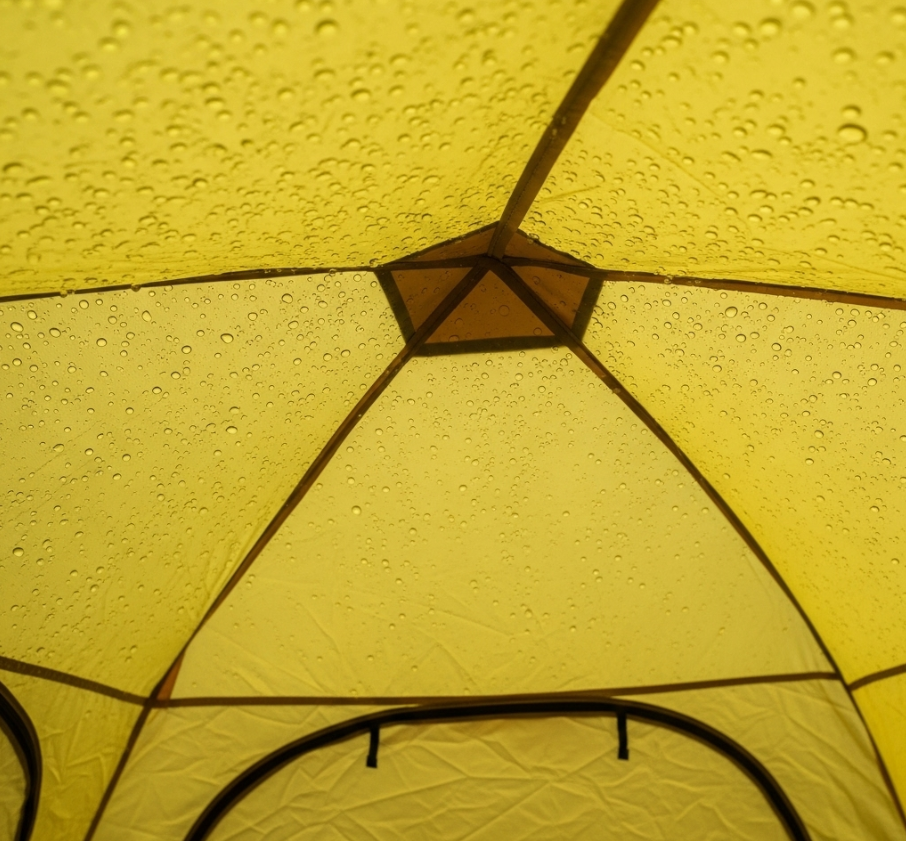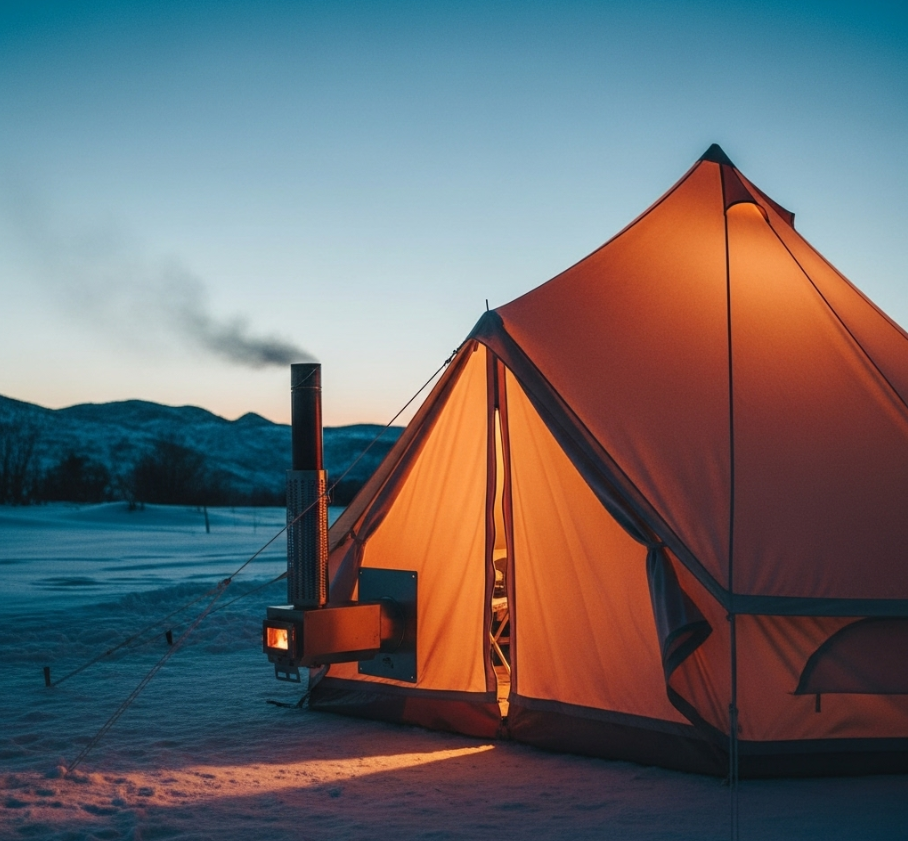The best material for a glamping tent is determined by a trade-off between key performance factors. Canvas offers unmatched durability and breathability for ultimate comfort, making it the benchmark for 4-season use. Polyester provides a lightweight, low-maintenance, and more affordable option ideal for casual use. Polycotton serves as a hybrid, balancing the benefits of both.
Selecting the right tent fabric is the most impactful decision in your glamping venture. This choice directly impacts guest comfort, the tent’s lifespan, and your return on investment. As experts in performance textiles, particularly premium cotton duck canvas, we developed this guide to dissect the science and practicalities behind each option. In our 25 years of supplying textiles for outdoor structures, we have observed that military-grade canvas tents, when properly maintained, regularly remain in service for over two decades. This guide provides the information needed to make a confident selection, and our guide to buying tent fabrics offers additional purchasing support.

Key Takeaways
Key Terms:
This table provides a direct comparison of the most common glamping tent materials. The data reflects typical specifications for high-quality fabrics used in tent construction.
| Feature | Cotton Canvas (12oz Army Duck) | Polycotton (285gsm Blend) | Polyester (600D PU-Coated) |
| Average Lifespan | 15+ Years | 7–10 Years | 3–5 Years |
| Waterproof Rating | Excellent (Fiber Swell) | Very Good | Excellent (Coating-Dependent) |
| Breathability | Excellent | Good | Poor |
| Condensation Risk | Very Low | Low | High |
| UV Resistance | Excellent | Good | Fair to Poor |
| Insulation | Good | Fair | Poor |
| Maintenance Level | Medium | Low to Medium | Very Low |
| Avg. Weight (per m²) | 407 g | 285 g | 210 g |
| Est. Cost Per Year | $135 | $170 | $200 |
Understanding the core composition of each tent fabric reveals its inherent strengths and weaknesses. The primary options for quality glamping tents are canvas, polyester, and polycotton.

Canvas is the gold standard for premium glamping tents due to its superior strength, natural waterproofing, and unparalleled breathability. These qualities create a comfortable and durable interior climate that synthetic materials cannot replicate. Cotton canvas, specifically duck canvas, is a tightly woven textile. This weave gives the fabric its signature durability and weather resistance. For a complete overview of this material, see our beginner’s guide to cotton duck.
Key Attributes of Canvas:
Considerations for Canvas:
Polyester is a synthetic polymer fabric. It is chosen for its excellent water resistance, low cost, and light weight. These features make it a suitable material for mobile or budget-conscious glamping setups where ultimate durability is not the primary factor.
Key Attributes of Polyester:
Considerations for Polyester:
Polycotton is a hybrid fabric that blends polyester and cotton fibers. The material aims to offer the breathability of cotton with the lighter weight and lower maintenance of polyester.
Key Attributes of Polycotton:
Considerations for Polycotton:
It is useful to distinguish glamping tent fabrics from those used in technical backpacking tents. Backpacking tents use ultralight synthetic materials like ripstop nylon. These fabrics prioritize minimal weight above all else. They are not suitable for semi-permanent glamping structures because they have lower tear strength and degrade quickly under continuous sun exposure. Glamping materials, in contrast, prioritize durability, comfort, and weather resilience over weight.
The choice of tent material directly influences the comfort of the occupants and the structure’s resilience against the elements. Key factors include water resistance, breathability, and durability.
Both canvas and polyester can be waterproof, but they achieve this through different mechanisms. A polyester tent relies entirely on a synthetic coating for its water resistance. Canvas, in contrast, uses the natural properties of its cotton fibers. When wet, the fibers swell to close the gaps in the weave, creating a water-resistant barrier. This process is detailed in our article on how canvas becomes waterproof.
| Waterproofing Aspect | Cotton Canvas | Coated Polyester |
| Mechanism | Fiber Swell (Natural) | Synthetic Coating (PU) |
| Failure Mode | Contamination (Oils) | Coating Delamination/Abrasion |
| Repairability | High | Low to Medium |
Breathability is a material’s capacity to allow water vapor to pass through it. Human respiration, a key factor in tent condensation, produces up to 1 liter of water vapor per person, per night. High breathability is a defining characteristic of a canvas tent. It allows this vapor to escape, which keeps the interior dry and comfortable. Polyester’s low breathability traps the vapor, causing it to cool and turn into liquid condensation on the tent’s inner walls.

A tent’s durability is a function of its tear strength, abrasion resistance, and ability to withstand UV radiation. Cotton canvas possesses a thick, robust fiber structure that gives it a substantial advantage over polyester. The tear strength of these fabrics is often measured using protocols like the ASTM D2261 standard, ensuring consistent and reliable data. For applications that require specialized protection, specially treated tent fabrics like our Sunforger Canvas offer enhanced water repellency and mildew resistance, extending the fabric’s service life.
The initial price of a glamping tent is only one part of its total cost. Factoring in maintenance and lifespan reveals a more accurate financial picture.
Canvas requires gentle cleaning with non-detergent soaps and periodic re-treatment to maintain its performance. Polyester can be cleaned with milder soaps, but harsh chemicals can damage its waterproof coating. Preventing mildew is a primary concern for canvas care. For detailed instructions, consult our guide on how to prevent and treat mildew on canvas.
| Maintenance Task | Canvas Instructions | Polyester Instructions |
| Routine Cleaning | 1. Brush off loose dirt.2. Use a soft brush and cool water.3. Rinse thoroughly.4. Air dry completely. | 1. Use a sponge with mild soap and lukewarm water.2. Do not use a machine washer.3. Rinse well.4. Air dry. |
| Mildew Removal | 1. Create a solution of 1 part salt/vinegar to 10 parts water.2. Apply with a brush.3. Rinse thoroughly.4. Air dry completely in the sun. | 1. Use an enzyme cleaner.2. Follow product instructions.3. Rinse and air dry. |
A canvas tent with a higher initial cost often provides a better long-term return on investment due to its extended lifespan. The table below shows a sample calculation.
| Sample ROI Calculation | Heavy Canvas Tent | Mid-Range Polyester Tent |
| Average Tent Cost | $2,025 | $800 |
| Average Lifespan | 15 years | 4 years |
| Calculated Cost Per Year | $135 | $200 |
You can calculate your own cost-per-year using this formula: (Initial Tent Cost + Estimated Lifetime Maintenance Costs) / Expected Lifespan in Years.
Cotton canvas, as a product derived from a renewable plant, is generally considered more sustainable than petroleum-based polyester. High-quality organic cotton canvas further reduces the environmental impact. According to the Higg Materials Sustainability Index, the global warming potential of generic polyester production is approximately 5.5 kg CO2 eq per kilogram of fabric, whereas organic cotton is closer to 2.3 kg CO2 eq. The long lifespan of a canvas tent also means less material ends up in landfills.
The ideal tent fabric varies with the environment. A material that performs well in one region might be unsuitable for another.

In hot, dry climates, breathability and UV resistance are the primary factors. Canvas is the superior choice. Its breathability allows hot air to escape, and its thick fibers provide excellent protection from intense sun, degrading much slower than polyester. A premium canvas solution for these conditions is our beautiful and rugged Waxed Army Duck, which also repels dust.
Temperate climates experience a mix of sun, rain, and humidity. This is where canvas and polycotton both perform well. The choice depends on the balance between durability and portability. For semi-permanent setups, canvas remains the top choice. For those who move their tents frequently, polycotton offers a good compromise.
In hot, humid, and rainy climates, managing moisture is the biggest challenge. Canvas is the superior material because of its exceptional breathability. It actively combats the high risk of interior condensation that plagues polyester tents in these conditions. While polyester sheds rain well, its inability to breathe creates a damp, uncomfortable environment.
No. A wood stove should only be used in a tent made from a flame-retardant material like canvas and with a professionally installed stove jack. Using a stove in a standard polyester tent poses a severe fire hazard.
Seasoning is the process of exposing a new canvas tent to water one to two times. This process makes the cotton fibers swell and interlock, which closes any tiny holes in the seams from the manufacturing process. This step is necessary to make the tent fully waterproof.
Any natural fabric can develop mold or mildew if stored while damp. To prevent this, always ensure your canvas tent is completely dry before packing it away for storage. Good ventilation during use is also a key preventive measure.
Polyester tent seams are typically sealed with a special tape applied with heat by the manufacturer. Canvas tent seams self-seal as the cotton thread used in them swells with water, just like the fabric itself.
For those seeking a glamping tent, the material choice dictates the structure’s performance. Cotton canvas provides maximum longevity, all-weather comfort, and a durable, breathable environment, making it the best investment for 4-season or commercial use. Polyester offers a lightweight, low-cost option for temporary or casual setups but suffers from poor breathability and lower durability. Polycotton serves as a functional hybrid, balancing the primary traits of both natural and synthetic fabrics.
We recommend you begin by exploring our extensive range of premium Army Duck and Numbered Duck Canvas fabrics. Contact our textile experts to find the perfect material for your project.